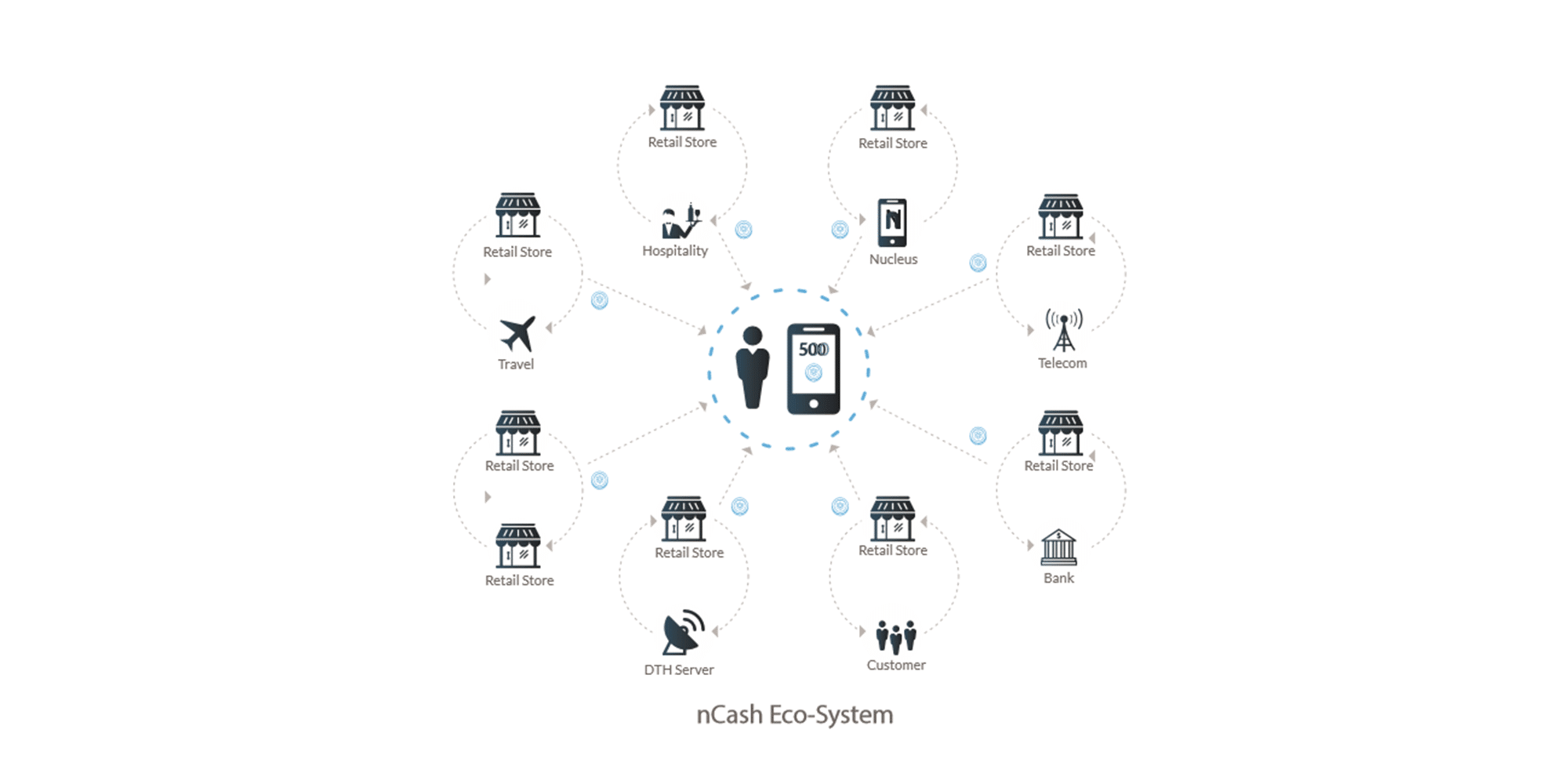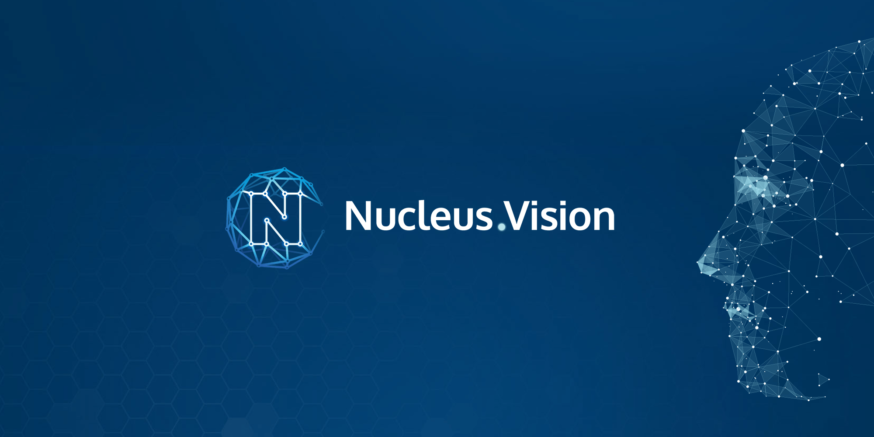Nucleus Vision is an end-to-end ecosystem of hardware and software able to collect and distribute unique data from the offline world. Founded in 2014 at Harvard University, Nucleus Vision couples its blockchain backed software with proprietary IoT Sensors to create an economy of offline user data.
ION hardware + Orbit Blockchain + Neural Network = nCash Universal Loyalty Program
The first phase of Nucleus Vision has been for brick-and-mortar businesses to connect with their customers through e-commerce like data collection. Beyond phase one though, the hardware and software that Nucleus Vision has developed will be leveraged into home and retail security along with other NFC-like solutions.
How Does Nucleus Vision Work?
Nucleus Visions Technical Papers: One Pager | Light Paper | White Paper
Nucleus Vision is primarily made of three components: the Orbit Blockchain, ION Sensors, and a Neuron Intelligence Platform. These three components work together to collect and distribute offline consumer data between an economy of partners and users. To understand fully how Nucleus Vision works it is essential to look at these three components individually.

The ION Sensor
A proprietary piece of hardware, the ION Sensor is capable of collecting data such as temperature, pressure, motion, acceleration, and sound. When installed, the sensor becomes a node within the ION network which can be used to blanket the floors space of a retail space.
Designed for over three years, the ION sensor was focused on reducing the barriers to access. Most interestingly, it doesn’t require Bluetooth, RFID, Wifi, NFC, or any other specific hardware for a customer to be recognized on the ION network. A customer will be seen on the network provided they have a cell phone and any cell phone will do.
Each ION Sensor unit will cover 200 meters of floor space, ideal for small businesses. However, the sensors can be used to form an ION network and cover more space by adding additional units. The ION Sensors will process 32 ID’s per 612 microseconds, but again can be networked for higher volume foot traffic areas.
In short, an ION Sensor is used first to identify a customer. Once a customer is identified within the ION network, the sensor passes the ID onto the other components of the Nucleus Vision. While the Neural Network or Orbit Blockchain are playing their roles, the ION sensor will continue to collect unique data on the customer still inside the ION network.
nCash and The Orbit Blockchain
Orbit is Nucleus Vision’s blockchain platform where customer identities, customer data, and the nCash tokens move. Orbit uses the features of blockchain to transfer the assets among the network securely and transparently.
The Orbit blockchain is comprised of ERC20 smart contracts on the Ethereum Blockchain. However, the white paper admits there are concerns about Ethereum’s bandwidth saying Nucleus Vision is able to shift to another smart contract blockchain if needed.
Orbit blockchain is fueled by nCash Tokens which is the primary incentivization mechanism within the Nucleus Vision ecosystem. On the surface, nCash is the foundation of the Nucleus Vision Universal Loyalty Program. However, behind the scenes, nCash is also present in the communications between retailers.
Retailers, like the customer, can be incentivized to share their own data or data previously collected within their own ION Network. nCash is used in the transferring of the customer data between consenting retailers similar to its use between customers and retailers.
Neuron Intelligence Platform
Nucleus Vision’s third component is the Neuron Intelligence Platform, a combination of front-end interface and analytics engine. If ION sensor is what collects the data and Orbit is how the data moves then the Neuron Intelligence Platform is what thinks about the data.
The Neuron Platform uses shared data in its deep learning algorithms to find better opportunities in customer patterns. Furthermore, based on the accessible aggregated data, the Neuron Platform implements a customer score to quantify customer profiles and their possible shopping behaviors.
Nucleus Vision History and Team
Nucleus Visions Socials: Twitter | Medium | Reddit | Github | Youtube | Website
What is Nucleus Vision? E-commerce level data collection and analytics for the offline world. But why, when, from where, and by who?
Nucleus Vision Backstory
Last year the CEO and founder of Nucleus Vision, Abhishek Pitti, published his story behind Nucleus and the path that lead him to his vision. Pitti, as a child working for his father’s plumbing store in India, identified the need for customer information. The young Pitti was able to see the value of the information about who was coming into the store.
This idea of customer information resonated with Pitti as he cultivated a career in aerospace and later began his studies at the Harvard Business School. While there, and with a shifting focus onto predictive marketing, Pitti dropped out of Harvard in his second year to fully focus on Nucleus.
Pitti has since been developing the suite of products involved in Nucleus Vision and currently has ION Sensors installed in ten retail locations. Along the way, the project has gained some notable consultants and investors including early blockchain investor Tim Draper. Additionally, the Nucleus core team has a reputable pedigree with experience from Levi Strauss, MIT, TED, CISCO, and a suite of other high-level accreditations.
The Nucleus Vision Team

Founded by CEO Abhishek Pitti, Nucleus Vision is a 40 person team including 9 blockchain developers, 5 data scientists, 1 IoT platform architect, 5 marketing experts, 9 engineers, and 11 operations professionals.
The core leadership team includes Abhishek Pitti as CEO, Martin Dudley as the Retail Partner along with Subrata Siddhanta as Executive President of Retail Business, Avinash Pitti as CTO and Brooks Atwood leading Creative Direction.
Nucleus Vision has a number of advisors and key investors including venture capitalist Tim Draper, Harvard Business School professor José Alvarez and telecom professional Arun Seth to name a few.
What are nCash Tokens
nCash Token Quick Facts
- nCash is a non-minable ERC20 token
- Supply cap of 10 billion nCash Tokens
- nCash can be stored in any ERC20 compatible wallet
- Currently on the Ethereum Blockchain
Within the Nucleus Vision ecosystem, nCash is the incentivization mechanism used to encourage the flow of data on the Orbit blockchain. In short, nCash is used to move data between retailers and consumers.

Consumers can be rewarded with nCash for various activities while shopping such as providing access to your data. Additionally, shoppers will be able to use nCash within a universal loyalty program. Users are rewarded for various shopping activities and can redeem their nCash across a suite of outlets including exchanging for dollars on a crypto exchange.
Retailers and other stakeholders will also use nCash to move data across the ecosystem. Customer information and profiles can be shared throughout the Nucleus Vision network between any number of stakeholders. The flow of data between retailers will help create more accurate and functional customer profiles.
Where Can You Buy and Store nCash
Top 3 nCash Exchanges: Binance | Huobi | Koinex
Nearly 95% of total nCash trading activity is on Binance with the most popular trading pair being NCASH/BTC. The remaining 5% total market activity for nCash is primarily split between Huobi and Koinex. All three top nCash exchanges have on-exchange storage.
Best nCash Wallets: MyEtherWallet | Metamask
Being an ERC20 token, nCash has the benefit of being compatible with Ether wallets which also support ERC20 tokens. Most notably there are two names which are most reputable and functional as ETH and ERC20 token wallets. MyEtherWallet is an open-source online ETH and ERC20 token wallet which allows anyone to create a wallet with options for both online and offline wallets. Metamask is an extension which acts as a bridge between the Ethereum Network and your browser that provides an ETH and ERC20 token wallet with options to create multiple wallets.
[thrive_leads id=’5219′]
Conclusion
Nucleus Vision wrangles together an ecosystem of software and hardware targeted at collecting data that was previously inaccessible. Their roadmap wants to scale their ION sensor from the current 10 units into the hundreds of thousands before moving into other industries like home and retail security.
If successful, Nucleus vision will be able to create an economy of consumer data parallel to the online e-commerce space.





